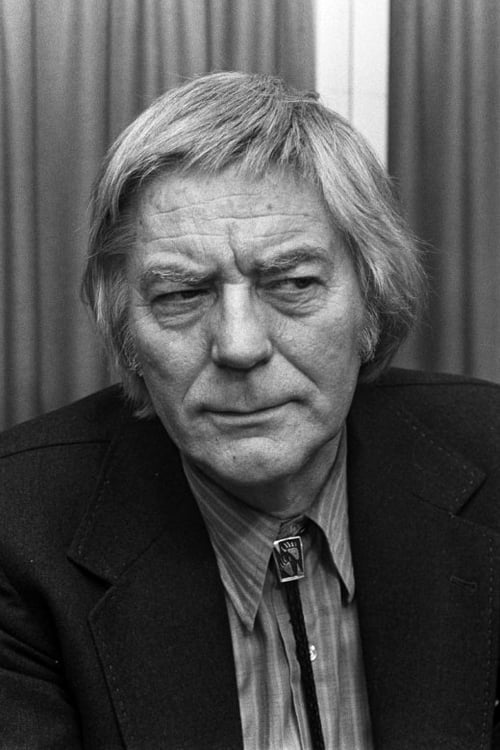Mirror of Holland (1950)
Género : Documental
Tiempo de ejecución : 9M
Director : Bert Haanstra
Sinopsis
In this short film Bert Haanstra gives his vision - from the water – of a tranquil Holland. During filming he held the camera upside down and afterwards put the images ‘up right’ again in the film. By doing this, we see the ‘usual’ waterfront, but transformed by the rippling of the water. In this way Mirror of Holland became a modern looking experimental film. However this did not devalue the Dutch sentiment regarding waterfronts that are so trusted to so many.

Un oficial alemán (Jai Courtney) es enviado a Holanda para determinar si el Servicio Secreto británico se ha infiltrado en la casa del Káiser Wilhelm II (Christopher Plummer) durante el inicio de la Segunda Guerra Mundial, pero comienza un peligroso romance con una joven judía holandesa (Lily James) con consecuencias que ni ellos ni el Káiser podrían haber previsto.
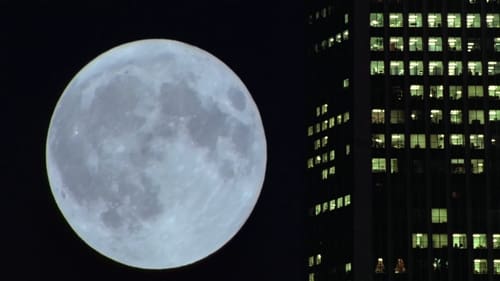
Realizado entre los años 1975 y 1982, "Koyaanisqatsi" -primera parte de lo que sería luego una trilogía formada por Koyaanisqatsi (1982), Powaqqatsi (1988) y Naqoyqatsi (2002)- es un singular documental que refleja la colisión entre dos mundos obligados a convivir: por un lado la vida de los hombres en la sociedad moderna, la vida urbana y occidental, llena de tecnología, ciencia y consumismo. Por otro la naturaleza y el medio ambiente del planeta Tierra. Sin voz humana, tan sólo con el poder de las imágenes y la banda sonora minimalista de Philip Glass, Godfrey Reggio presentó este documental ante 5000 personas el 4 de Octubre de 1982 en el Radio City Hall de Nueva York, convirtiéndose al instante en un documental de culto.
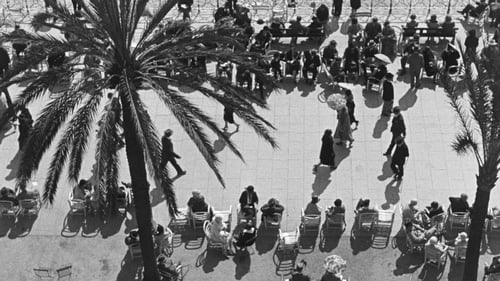
Conmovedora visión de Niza, la atmósfera y el tipo de vida de la ciudad. La película se centra principalmente en el contraste entre los ricos ociosos que toman el sol y disfrutan de los lujos de hoteles y casinos, y los barrios pobres de Niza.
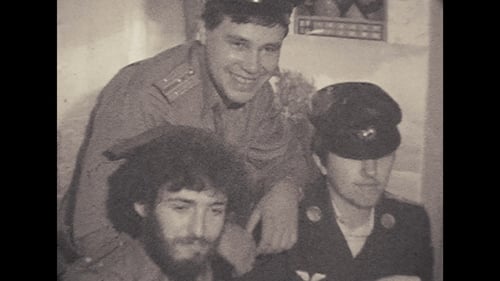
Mockumentary experimental film, which shows one day in the life of a young man. The action takes place on the Day of Soviet Cosmonautics, April 12, one of the last years of the USSR. Outside the window, it is gradually getting warmer, the onset of spring is felt, promising hope for the possibility of changes in the country. The hero of the film is fond of space. The young man, who idolizes Gagarin, is engaged in reconstruction, making the uniform in which the cosmonaut walked in the prime of his glory. Our hero is also a film enthusiast. He makes films with stories of space flights and shows them to his friends. The film is stylized as amateur films of the 1980s and was shot on a 16-mm color film made by the company" Svema", made in the Soviet Union. The quality of this film allows the viewer to fully immerse themselves in the atmosphere of the time of the film, which is dedicated to Soviet cosmonautics and Edward D. Wood Jr.
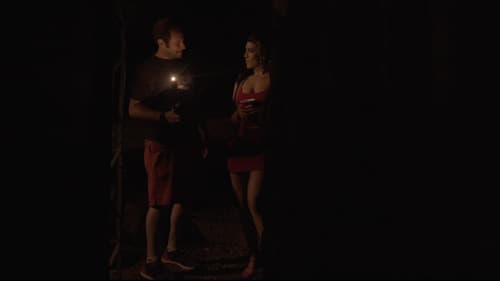
A costume designer is sent to the Catskills for an interactive theatre piece set in the 1920s. When she arrives things seem dark, strange and off. She soon realizes she is part of a student film.

Estructurada en tres partes (Creación, Paraíso y La era dorada) y rodada en el desierto del Sahara, esta es sin duda la película menos convencional del director alemán. Sin argumento ni guión determinado, Herzog nos regala una serie de imágenes, palabras y música que funcionan conjuntamente dando un resultado singular. La sensación resultante viene reforzada por una banda sonora con temas de Leonard Cohen, Mozart o la Third Ear Band
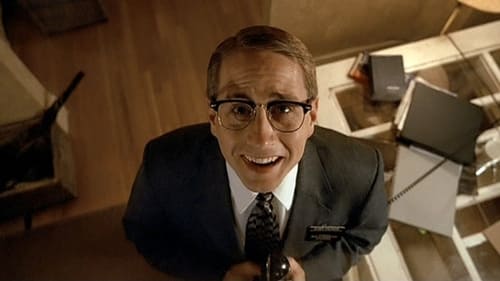
Dos parejas de misioneros mormones de América viven en un apartamento en la ciudad holandesa de Haarlem. Sus personalidades son muy diferentes. Elder Johnson es el Líder de Distrito y supervisa sus esfuerzos. Su compañero Elder Van Pelt, busca convertirse en el asistente del presidente de la misión (el puesto más alto disponible) tan pronto como sea posible. Elder Rogers se ha desilusionado y ha descuidado sus deberes desde que un compañero de misión anterior regresó a Estados Unidos y se casó con su novia. Los tres reciben al nuevo compañero de Elder Rogers, Elder Calhoun, un nuevo Elder que es un nerd pero entusiasta que acaba de llegar desde el Centro de Capacitación Misional (CCM) en Utah. Por desgracia, su formación no le dio mucha fluidez en el idioma holandés. Por suerte la primera persona a la que se acerca a hacer proselitismo es un compatriota llamado Kyle.
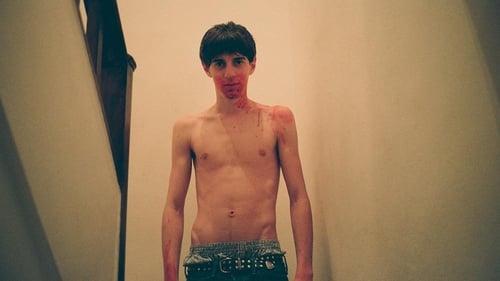
Profesor en una escuela de idiomas, cuando el horario laboral ha terminado, Carlos se pasea por la zona de cruising de Montjuïc. Allí encontrará a Toni, uno de sus estudiantes, un chico que parece distinto a todos los demás y por el que Carlos comenzará a sentir atracción, dando pie a una cinta con una envolvente banda sonora de Don the Tiger.
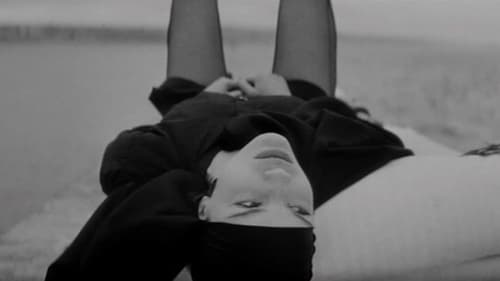
La Virgen María da a luz a un Jesús ya adulto que desde el primer momento se encuentra a disgusto en la Tierra y clama al cielo tratando de que su Padre atienda sus quejas. A lomos de un burro, Jesús emprende sin ninguna convicción su camino para, con la ayuda de un megáfono, tratar de difundir su mensaje en un mundo permanentemente hostil que no quiere escucharle.

This short film made by László Moholy-Nagy is based on the shadow patterns created by his Light-Space Modulator, an early kinetic sculpture consisting of a variety of curved objects in a carefully choreographed cycle of movements. Created in 1930, the film was originally planned as the sixth and final part of a much longer work depicting the new space-time.

A visual representation, in four parts, of one man's internalization of "The Divine Comedy." Hell is a series of multicolored brush strokes against a white background; the speed of the changing images varies. "Hell Spit Flexion," or springing out of Hell, is on smaller film stock, taking the center of the frame. Montages of color move rapidly with a star and the edge of a lighted moon briefly visible. Purgation is back to full frame; blurs of color occasionally slow down then freeze. From time to time, an image, such as a window or a face, is distinguishable for a moment. In "existence is song," colors swirl then flash in and out of view. Behind the vivid colors are momentary glimpses of volcanic activity.
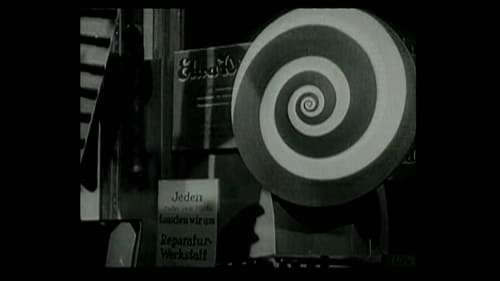
Inspirado en el documental soviético "Kino-Nedelia" (1918) de Dziga Vertov, Ruttmann realizó en 1927, contando con los mejores fotógrafos alemanes de la época, un documental basado en la vida, durante un día, de la ciudad de Berlín.

An experimental film comprised of Stanley Kubrick's THE SHINING played forwards and backwards at the same time on the same screen, creating bizarre juxtapositions and startling synchronicities

This hand-painted work is easily the most minutely detailed ever given to me to do, for it traces (as best I'm able) the hypnagogic after-effect of psychological cathexis as designed by Freud in his first (and unfinished) book on the subject - "Toward a Scientific Psychology." (SB)

A montage of the skyscrapers of Manhattan opens with a succession of stationary views of the upper portions of numerous buildings. This is followed by a wide variety of fluid shots, which also begin to show more and more of the surrounding city, in addition to the skyscrapers themselves.

A tilted figure, consisting largely of right angles at the beginning, grows by accretion, with the addition of short straight lines and curves which sprout from the existing design. The figure vanishes and the process begins again with a new pattern, each cycle lasting one or two seconds. The complete figures are drawn in a vaguely Art Deco style and could be said to resemble any number of things, an ear, a harp, panpipes, a grand piano with trombones, and so on, only highly stylized. The tone is playful and hypnotic.

This documentary takes an economic perspective, painting a candid picture of how the Dutch chain store HEMA has had to adapt to modern times and globalization to continue as a major player on the highly competitive retail market. It's all about expansion, even as far as China. But do foreign countries really need quintessentially Dutch concepts such as uniform pricing, the classic HEMA smoked sausages and timeless ladies' dresses? Chinese filmmaker Yan Ting Yuen, who came to the Netherlands at the age of six, followed the passionate CEO for a year, trying to find out what makes HEMA so unique. It turns out to be about more than just smoked sausages, as shown by the success of the new stores in France, where customers stuff their baskets with coffee mugs and Dutch syrup waffles.

"Necrology" es un film experimental y antropológico sobre la vida y la muerte en Nueva Yok. Filmado en la Grand Central Station neoyorkina, captura durante casi 12 minutos a numerosas personas anónimas en su rutina diaria en las escaleras mecánicas del metro neoyorkino.

Hans Richter, noted for his abstract shorts, has everyday objects rebelling against their daily routine.

This is one of the classic animations of the 1990s with its surreal tale of the struggle between the sexes. All the strains as well as the closeness of relationships are shown, the title referring to the repetition of the tensions throughout our lives. It also reveals the role the woman plays in a marriage and the need, though often not communicated properly, of the man for this companionship and support.

The film is an artistically spare depiction of the Greek myth of Sisyphus, sentenced to eternally roll a stone up a mountain. The story is presented in a single, unbroken shot, consisting of a dynamic line drawing of Sisyphus, the stone, and the mountainside.

With a similar dreamy mood like its predecessor "Take the 5:10 to Dreamland" (1976) this clip starts with a boy getting into his bed. The camera zooms in into the boy's mind and a slow, sad waltz (i.e."Valse Triste") accompanies images of a locomotive, a miner, the globe, the sky, a sheep heard, etc. Disparate elements, but if one concentrates only at the movement of the figures, one can perceive a commotion, slowly livening up: The starting wheels of the heavy locomotive, the tired miner pushing the heavy cart of coal bricks, the globe smoothly turning around and around, the clouds imperceptibly floating in the sky, the sheep idly moving in the herd, etc. We reach the first climax when a mannequin opens her coat like a flower. The second big crescendo spurts out from a "water hose", after watching schoolgirls doing gymnastics for quite a while. A sad, but nostalgic aftertaste lingers in the end when funeral cars drive away through a flooded area…
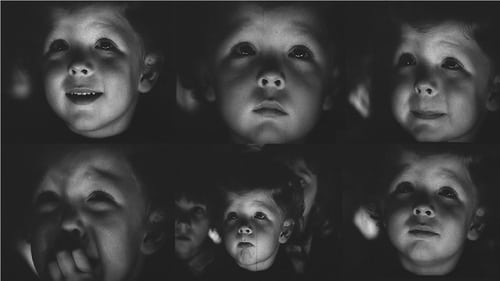
A 10 minute long journey of emotions that befall children faces. Fear, Curiosity; a Smile. They all sit in a dark theater. What they see, we don't; we can only guess from their faces.

Stan Brakhage's final film, made shortly before his death by wetting a filmstrip with saliva and using his fingernail to scratch marks into the emulsion.

Film about politically motivated violence in the Kingdom of Prussia.

This short animated fable stars witches, cloaked riders and other Gothic characters, in a tale about the hungry natural world. Here the artist plays cat's cradle with ideas, especially the notion that one thing leads to another and that lives lead from one to another. Without words but featuring a witch's brew of sounds.

Animated short film by Christopher Hinton.

An artist receives the visit of Grogg, an animated captain, to draw his portrait

A crazy squirrel provokes a dog into trying to catch him throughout the picture.

Documentary following an Edinburgh fishing trawler, the "Isabella Grieg".

Man's rebellion against the world of the digits.

Two Penny Magic (Zweigroschenzauber) starting off with a little magic trick. It then presents an array of images from swimmers, bicyclers, murderers, airplanes in flight, boxers, lovers, runners, becoming in the end a collection of images in a magazine.

Toma panorámica circular de 360º a cámara lenta de un pequeño apartamento. Cuando se pasa primero a la habitación no hay nadie allí, pero cada vez que se muestra de nuevo aparece la propia directora sentada en la cama, inmóvil primero, y luego ocupada haciendo diferentes cosas.

A waltz played with an accordion starts a short story about the running time.

In the first action he filmed, 6/64 Mama und Papa, Kren’s editing leads to many interlocking continuous shots; central takes recur like a leitmotif, circular motion and networking can be observed throughout the film. Kren painstakingly weaves the fury in front of his camera lens into dense geometrical figures. Shot/countershot sequences alternate, lumping back and forth between single (!) frames, they turn the Actionist turmoil into ornaments, rigid geometrical patterns, the equivalent in time to what Mondrian used to distill on canvas in space. (Peter Tscherkassky)

A day at the carnival — sensational tent shows where miracles can be seen for the price of admission, boisterous noise of crowds and barkers, shrill and gaudy circus music, the violence of the street ten-fold. This is the substance of Everything Turns, Richter’s first sound film. At its premier at Baden-Baden Richter got into a fight with two Nazi officials who disliked the film's ‘modernism.’ Yet in 1936 it was awarded first prize for artistic merit by the Nazis, with Richter’s name suppressed from the credits. He had long since left Germany.

La marche des machines is a thundering, thumping symphony of turbines, belts, flanges, wheels and sparks.

John, who loves the bottle a little too much, is one of a group of sightseers. Too drunk to follow the party, the reeling drunkard remains on the site of a ruin where he starts having hallucinations.

"Studie II (Hallucinationer)" (Study II (Hallucinations)) (1952), comprises twelve staged scenes that were modelled after a set of drawings. Accompanied by metallic sounds, various body parts, limbs and objects form surrealistic collages against the background of a black space. Peter Weiss intended to create associative images that can not be deciphered completely. Beyond any logical interpretation, he wanted to show pure inner feelings.

